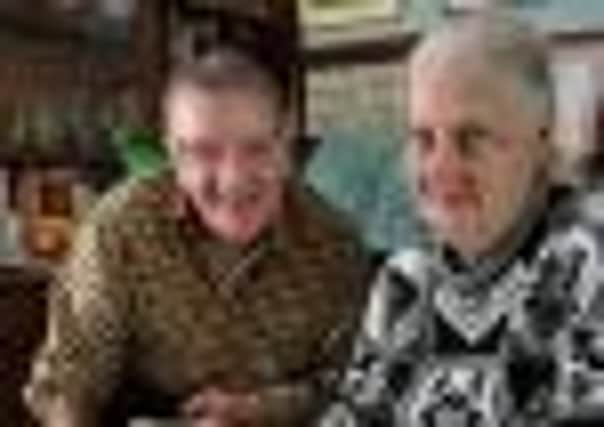Victorian farm diarist finds new readers


He recorded his working life and the details of his family tribulations over many years, in his diaries.
Six of them were found by Roy Newman, of Dinnington, and transcribed with the help of the local historical society. It was day-to-day detail of how Farmer Emmott went about his tasks which has fascinated our readers.
Advertisement
Hide AdAdvertisement
Hide AdFor example, he mentions hoppling sheep. It seems clear he meant tying one front leg to one back leg, to stop them going over walls, or to keep tups in check.
Several correspondents remembered when it was commonly done, usually with hessian or leather strips, and especially with Swaledale sheep (known in the Dales as Swardles), which are particularly likely to follow each other over the same weak point in any wall.
Hoppling was apparently made illegal at some point but bigger flocks and better fencing would have made it largely redundant any way.
Farmer Emmott also talked of wye calves – meaning females, everyone agreed. David Hamer, of Ripponden, remembered a Huddersfield auctioneer who called heifers wyes in the 1960s.
Advertisement
Hide AdAdvertisement
Hide AdLouise Hobson said her husband, from Rotherham, always divided new calves into bulls and wyes.
John Marshall, of West Bank Farm, at Carlton, near Goole, says a wye calf was a “new-dropped heifer”.
Majority interpretation of “spanged cow” was one with the red and white markings commonly found on Shorthorns, once common in the Dales. But one correspondent said it was a cow which had suffered pelvic damage giving birth, and another said it was a cow which had gone down and could not get up again.
Farmer Emmott also puzzled us by talking about “fest” cattle. Turns out he probably meant animals put onto somebody else’s grazing – or onto his – in return for some sort of recompense, which might be known as “gist”, from the old word “agistment”.
Advertisement
Hide AdAdvertisement
Hide AdChristine Garbutt, of Wilberfoss, said her 96-year-old dad, Maurice Hayton, formerly an East Riding farmer, understood “fest” to mean sold on trust, until cash was available.
Farmer Emmott did quite a lot in the building trade and we assumed the “mastic” he produced was lime as an alternative to cement. Nobody quarrelled with that, but we could still do with pinning down whether he would have meant lime powder or ready-mixed lime mortar.
He also sold “scythe sand” and “Calais sand”. The first was some kind of sharp sand – probably several kinds - used for fine sharpening.
Tom Robinson, of Bentham, remembered a neighbour who used to go some way, to High Salter Fell, for a particularly glassy scythe sand.
Advertisement
Hide AdAdvertisement
Hide AdA “strickle board” would be covered in grease and then dipped in the sand.
Jack Heseltine, of Kettlewell, had an uncle, Dennis Raw, who wrote a note on the old practice in a caption to a 1963 picture of himself using an emery-faced strickle – later supplanted by shaped “bullstones”.
This reminds us of another little mystery from the diaries. A recurring entry is the purchase of a bowl of grease from “Colne Fair”.
There is another reference to buying grease to make sheep salve, but that is a local purchase and the significance of the Colne grease is still to be explained.
Advertisement
Hide AdAdvertisement
Hide AdWe did not get much response on Calais sand but Andrew Smith, of Pocklington, found some evidence it was a grit to be mixed with water for burnishing metal.
Dorothy Holmes, 87, called about the Emmott family – and announced herself as a local by pronouncing Cowling as ‘Coaling’.
Under her maiden name, Dorothy Makin, she was a contributor to Cowling: A Moorland Parish, edited by Alec Wood and published in 1980. The Emmotts were made landowners in the area for their services to William the Conqueror in 1066 and after, she said. There was an Emmott Hall at Langshawbridge and there still is one at Haworth, and a third brother from the Norman army became lord of a manor around Cowling Hill – where, 700 years later, our Farmer Emmott was a struggling tenant on 43 acres.
Two of his great-great grandsons still live close by. Eric Emmott, 69, a retired carpenter and joiner, lives in Barrowford, near Nelson, only about eight miles from Cowling, although on the other side of the county border. His cousin, David, lives in Cottingley, on the Keighley side of Bradford, and has also made his living as a woodworker.
Advertisement
Hide AdAdvertisement
Hide AdBill Reilly, past president of the British Veterinary Association, gave us some comment on Farmer Emmott’s note for August 12 1876: “I part with a tape worm 12 feet long.”
Prof Reilly said: “Sounds like Taenia saginata, the beef tapeworm. The adult worm lives in the human intestine and can reach up to four metres. The intermediate stage is in cattle, where it forms cysts in muscle and heart. People are infected by eating infected beef.
“It is controlled by keeping infected animals out of the foodchain, and meat inspection plays an important part in this.
“If farmers were slaughtering their own animals for their own consumption, the infection in cattle may have been missed.
Advertisement
Hide AdAdvertisement
Hide Ad“Many of these parasites could live for years but some would be naturally rejected and expelled. I’m not sure what treatments there would have been in the 1870s but I suspect there would be purges.
“Improving sanitation and hygiene, and thorough meat inspection, have largely eliminated, but not eradicated, the parasite in the UK.”
The diaries are available on CD, at £6.50 including postage, from www.dinningtonhistory.co.uk